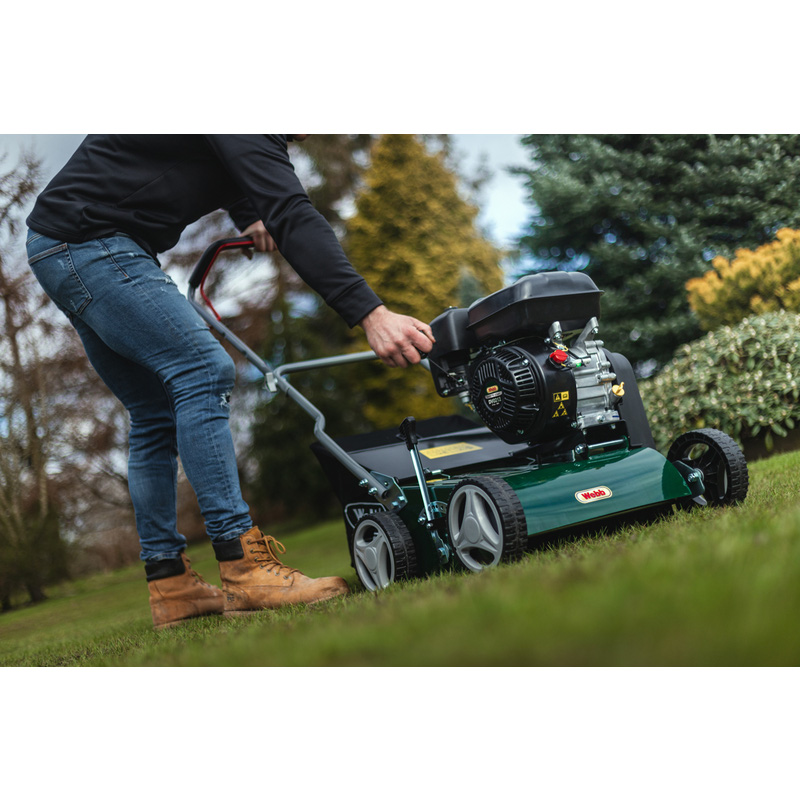If you’re in the market for a new lawnmower, then you’ve landed on the right page! With a range of different lawn mowers to choose from, picking the right one can be a bit of a minefield.
A popular rotary mower will get your grass under control in no time, whereas a hand mower is perfect for small lawns that require little maintenance. Or maybe your busy lifestyle means you’d prefer to take a hands-off approach with a robotic lawnmower.
No matter what type of lawnmower you decide upon, you can be sure of keeping your grass under control and your lawn looking its best throughout the spring and summer.
The Types of Lawnmowers to Keep Your Grass Under Control
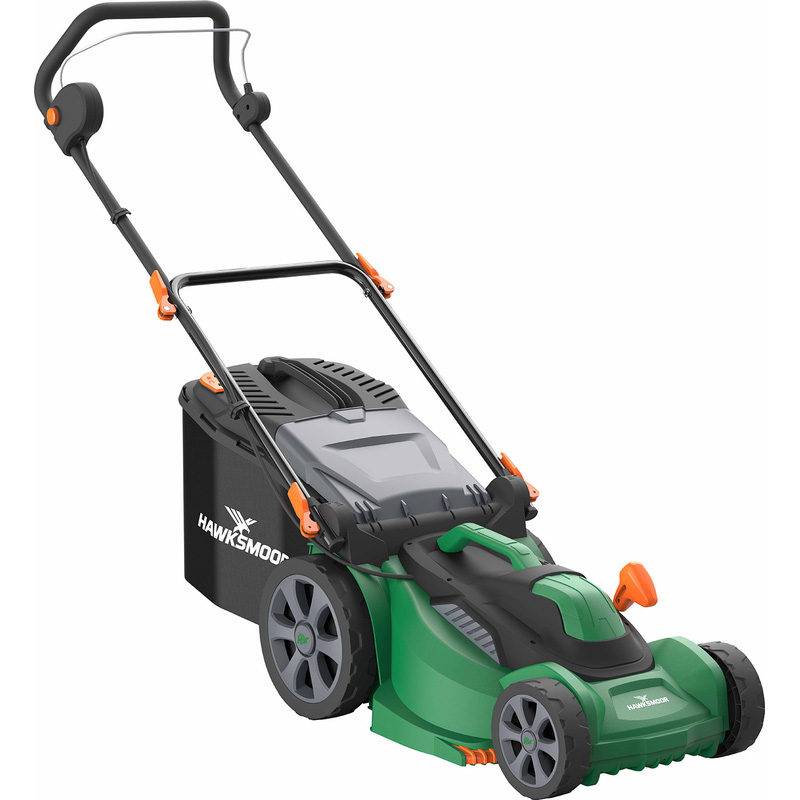
Rotary Lawnmower
A rotary lawnmower is a popular choice for many homeowners, especially those who have medium to large-sized gardens. They work by using a horizontally spinning blade which chops the grass at high speed. This makes them effective on different types of lawns, where they work well at cutting slightly longer or uneven grass. They’re well suited to unpredictable weather as they can handle damp grass better than some other types of mowers.
Available in electric, battery-powered, and petrol models, rotary mowers offer flexibility depending on your garden size and personal preference. Electric rotary mowers are ideal for small to medium lawns and tend to be lightweight and easy to manoeuvre. Cordless battery mowers offer more freedom of movement without the hassle of trailing cables, while petrol versions provide more power, making them best for tackling large lawns. Many rotary mowers also come with built-in grass collection boxes, helping to keep your lawn tidy as you mow.
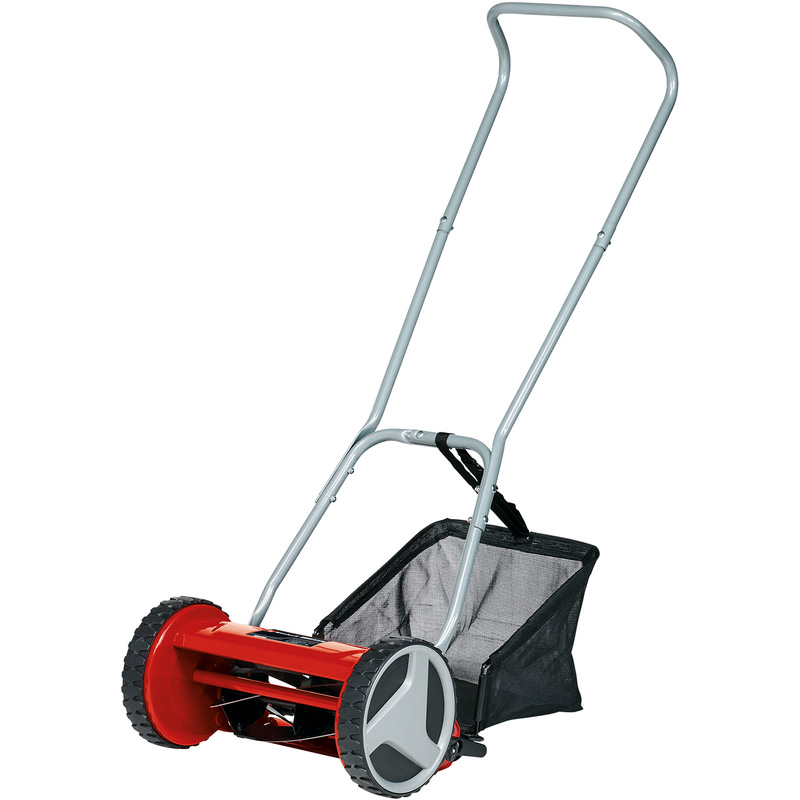
Hand Mowers
Hand mowers, also known as manual mowers or push mowers, are a traditional style and eco-friendly option, perfect for small, flat gardens. These mowers are powered entirely by the user, with a set of cylindrical blades that spin as you push, giving a very clean and precise cut. You need to use a bit of elbow grease to get the job done but as there’s no motor involved, they’re quiet, require no fuel or electricity, and are a great low-maintenance type of mower.
It’s usual for garden sizes to vary greatly, and hand mowers are a practical, and more affordable, option for compact lawns that don’t require a huge amount of work to keep them in check. That said, they’re best used on regularly maintained grass, as long or wet grass can be more difficult to cut. Despite that, their simplicity, low cost, and environmental benefits make hand mowers a great option for many people.
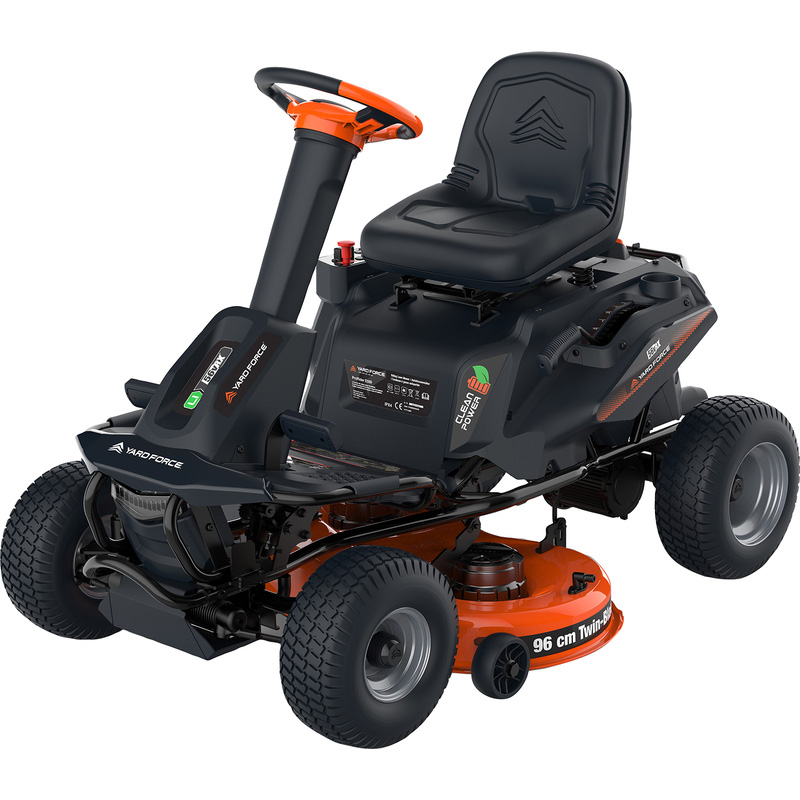
Ride-on Lawnmower
Ride-on lawnmowers are the ideal pick for large gardens. These machines allow you to sit and drive the mower, so you can cover a wide area quickly and with minimal physical effort. They’re particularly useful for cutting grass on uneven terrain or large open spaces where using a push mower would be impractical or very tiring.
Ride-on mowers come in various types, ranging from compact rear-engine models suited to larger domestic lawns to heavy-duty garden tractors used for both mowing and towing garden attachments. While they cost more upfront compared to other types of mowers, they save a lot of time and effort in the long run. So, if you have a particularly large lawn to mow, a ride-on mower can turn a dreaded chore into a more manageable task.
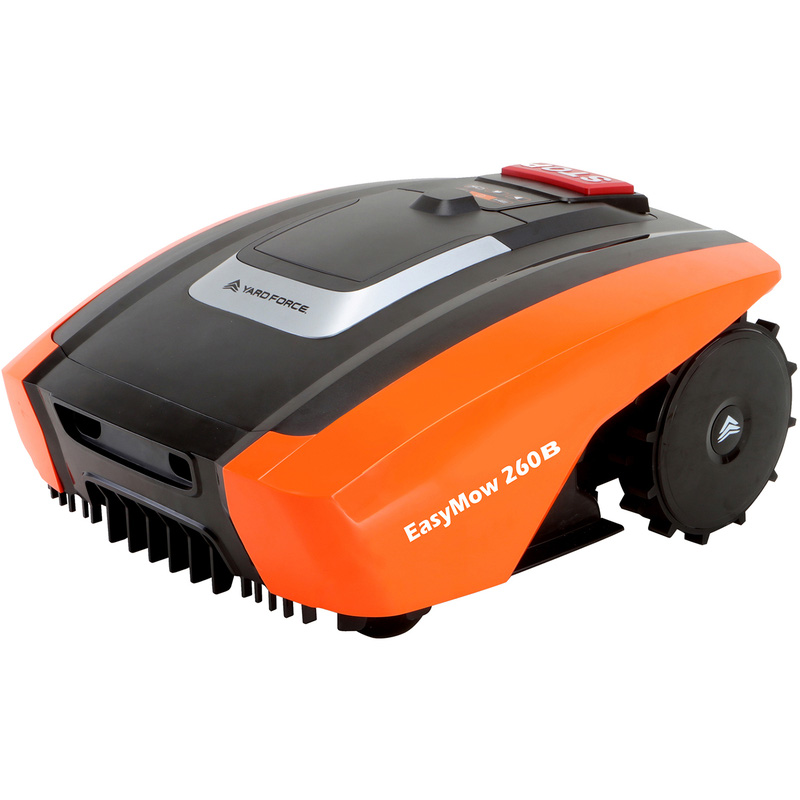
Robotic Lawnmower
Robotic lawnmowers are becoming an increasingly popular choice, especially among tech-savvy gardeners and those with busy lifestyles. These automated mowers work independently, using sensors and boundary wires to navigate your garden, keeping the grass neatly trimmed. They operate quietly and can be programmed to mow at specific times, even at night-time, making it perfect for maintaining a tidy lawn with minimal interruption.
Many robot mowers are weather-resistant and able to work in light rain, a key advantage on rainy days. While the initial cost can be higher when compared to traditional mowers, the convenience and low running costs may appeal if you’re looking for a hands-off, environmentally friendly mowing solution.
Lawn Mower Power Options
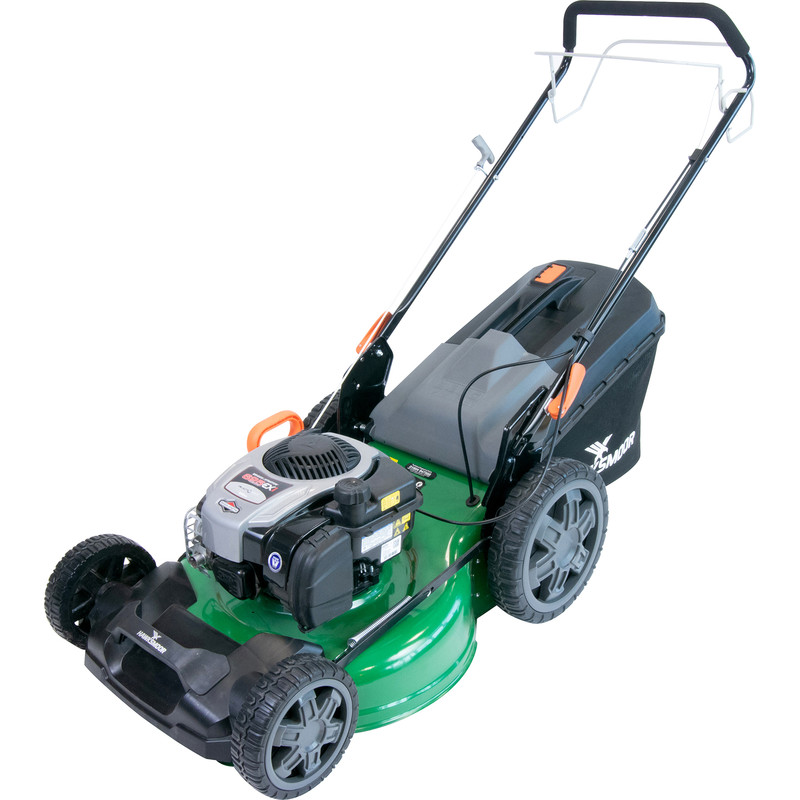
Petrol Lawnmowers
Petrol lawnmowers are durable, powerful, and economical – with their high-performance motors making light-work of long, thick grass. They can even be used when the grass is wet – ideal for unreliable British weather conditions!
You don’t need to worry about nearby plug sockets, and refilling is quicker than recharging a battery – making petrol lawnmowers convenient to use and ideal for medium to large lawns.
Because of their powerful petrol engines, they can be noisier and less eco-friendly than electric models.
Advantages
-
Quick to refill when fuel runs out
-
Powerful, durable, economical and convenient for all lawns
-
Can be used when the lawn is wet
Things to Consider
-
Initial cost is higher than corded electric mowers
-
Heavier and noisier than corded models
-
Higher greenhouse gas emissions
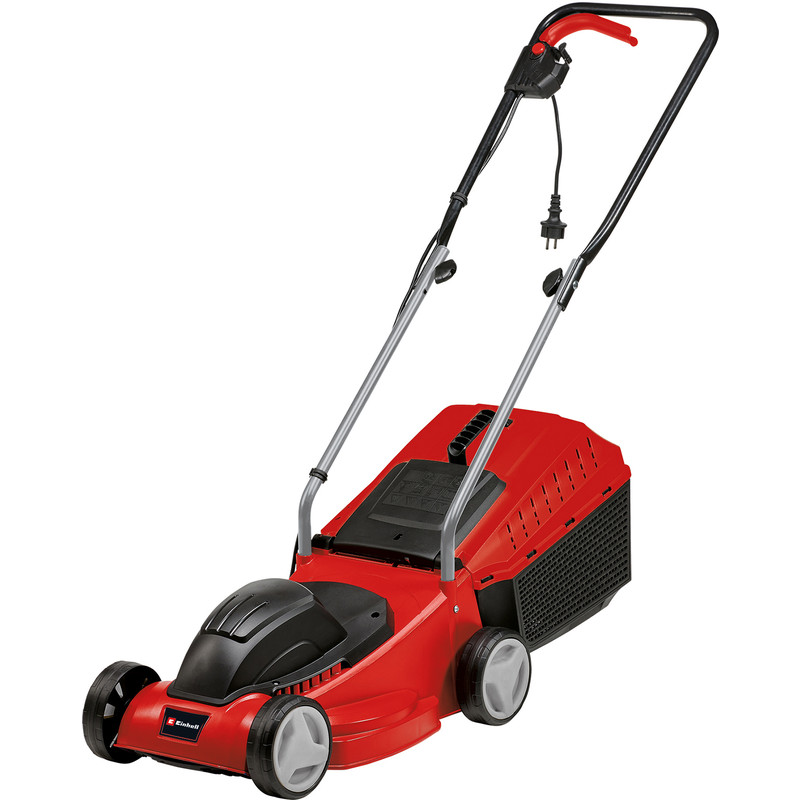
Corded Electric Mowers
Corded electric lawnmowers are powered by mains electricity, and generally cheaper than petrol and cordless alternatives.
Free from batteries and fuel tanks, mains-powered mowers are smaller and lighter than cordless or petrol models – and they don’t need refuelling or recharging. Mowing made easy!
Corded lawnmowers are limited by their cable lengths, making them less suited for larger lawns or gardens with obstacles to manoeuvre around. You should also never cut wet grass using an electric lawnmower – water and electricity don’t mix!
Advantages
-
Inexpensive and reliable for small to medium lawns
-
Smaller, lighter and quieter than petrol models
-
No refuelling needed – more eco-friendly than petrol
Things to Consider
-
Tied to a nearby electricity supply
-
Risk of tripping over the cord
-
Cannot be used to cut wet grass
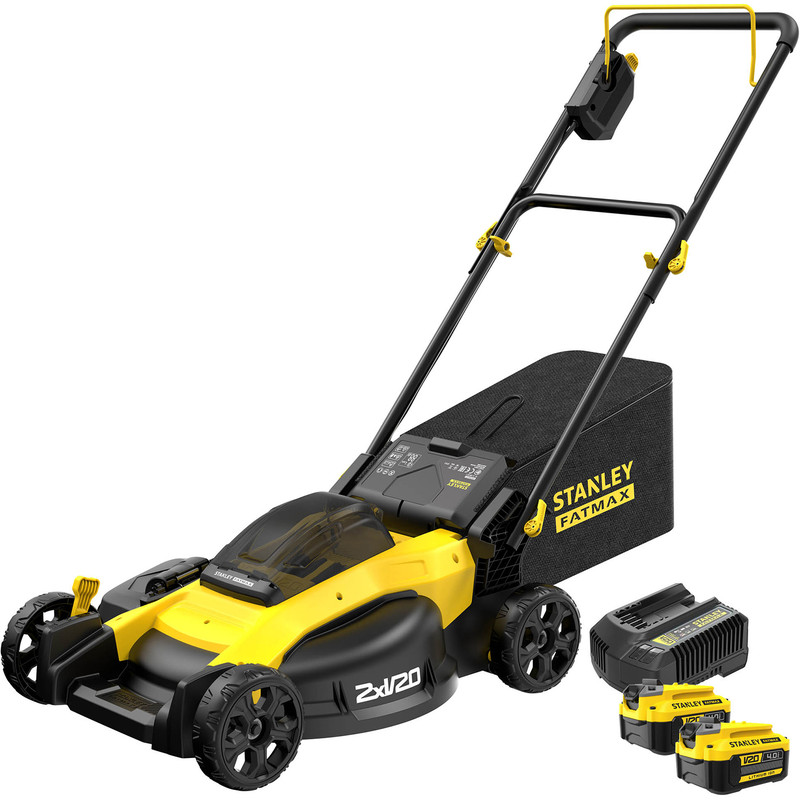
Cordless Electric Mowers
Cordless electric mowers are a great choice for those wanting a low-maintenance, easy-to-use model for medium to large lawns. Powered by sealed lead-acid or lithium-ion batteries, these cord-free mowers allow you to roam as far as your garden goes – with no risk of running out of cable!
They’re more eco-friendly than petrol lawnmowers, and safer than corded models because there’s no risk of tripping or running over cables.
Mowing a larger lawn? You may want to carry a spare battery with you to ensure you can get the job done in one go. Additionally, cordless electric mowers shouldn’t be used on wet grass because water can damage the battery.
Advantages
-
Easier to store and maintain than petrol mowers
-
More eco-friendly than petrol models
-
Safe and convenient – not limited by cable lengths
Things to Consider
-
Batteries need recharging which is time-consuming
-
Battery adds weight compared to corded models
-
Should not be used to cut wet grass
Key Lawnmower Features
Corded or Cordless?
Buying a corded mower means a constant energy supply, but you can only go as far as the cable will allow.
Blade Width
If you have a larger lawn, you might want to consider wider blades to cut more grass with each pass.
Self-Propelled
Great for sloped or larger lawns, self-propelled mowers need minimal effort to push – simply steer them in the right direction!
Grass Box
Grass boxes are a common feature on lawnmowers, collecting the cut grass instead of spitting it back onto the lawn. A larger grass box will ensure you don’t need to empty it as often.
Mulch Mowers
Mulch mowers trim the grass in such a way that it can leave clippings on the lawn to fertilise the grass.
Rear Rollers
Rear rollers flatten grass while mowing to create professional-looking lawn stripes with ease.
Adjustable Cutting Heights
Buying a mower with adjustable cutting heights allows you to be in control over how long you want your grass to be. Also, if you’re mowing wet grass you’ll want to be able to start with a higher cutting height, because it’s tougher and clumps up more than dry grass.







